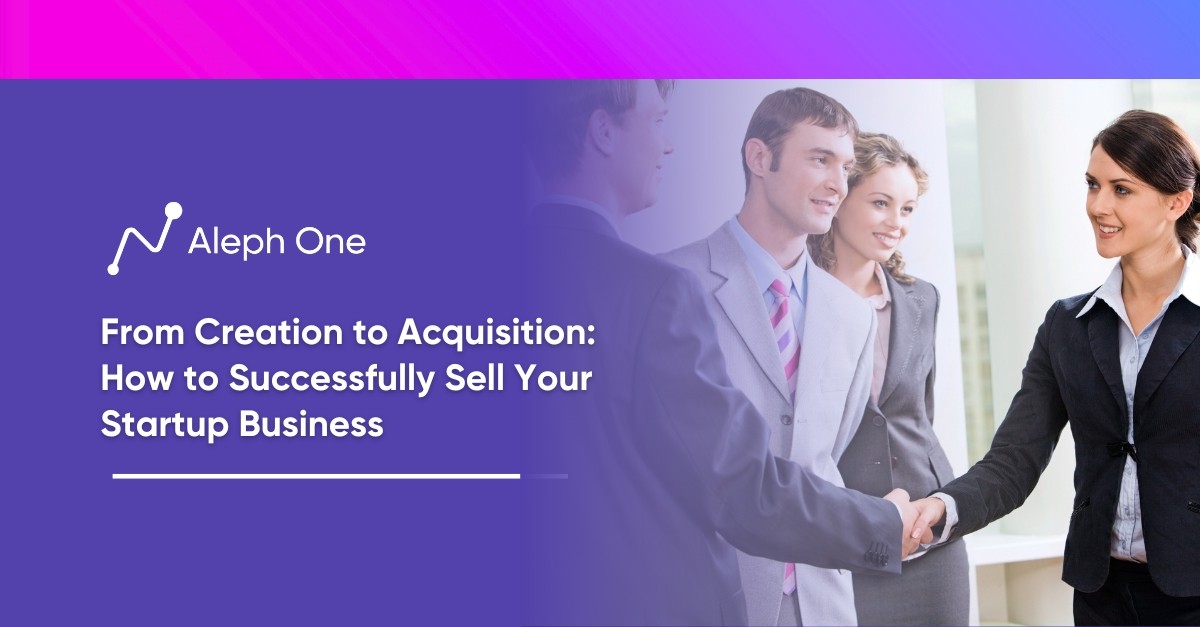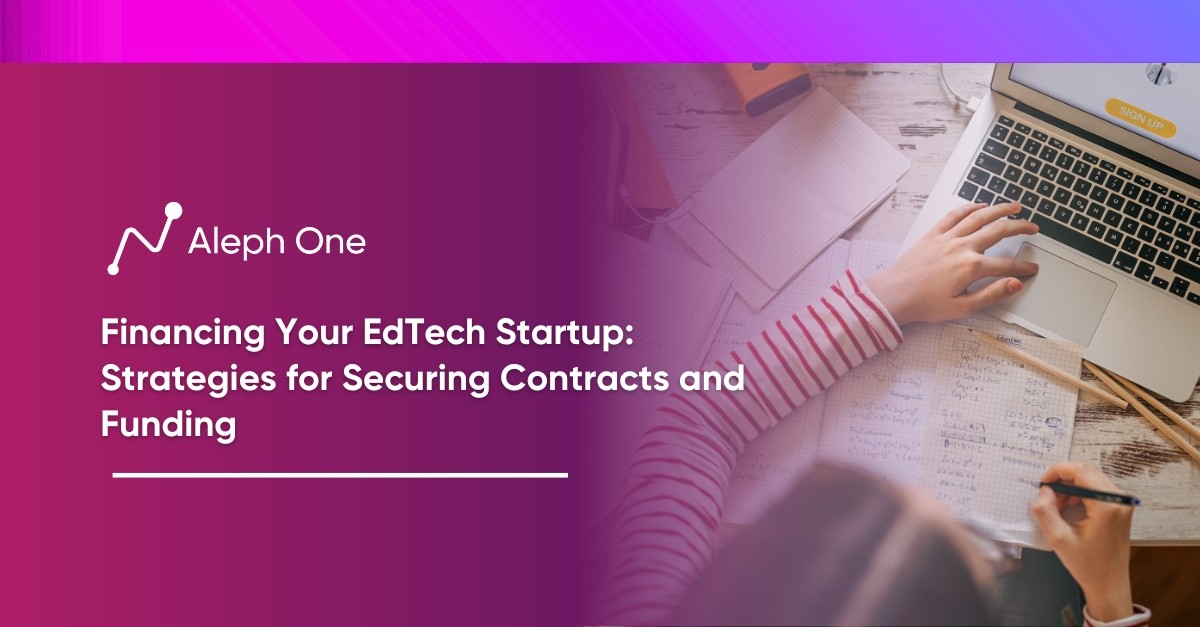Let’s work together to build something amazing. Share your project details and our team will reply to figure out the next steps to your success.

Selling a startup is often the ultimate goal for many entrepreneurs, but achieving a successful acquisition requires careful planning and strategic decision-making from the very beginning. This article explores the steps founders should take to position their startups for a successful exit. By following these steps and strategies, founders can increase their chances of successfully selling their startups, maximizing their value, and achieving a gratifying exit.

Plot Your Exit Strategy Before You Start
As an entrepreneur, it’s always early enough to start thinking about your exit strategy. Even at the concept stage of your startup, you should define key metrics, milestones, and an ideal acquisition profile. This forward-thinking will help position your company for acquisition and guide strategic decision-making as you grow.
Snapchat & Mint Wanted to be Acquired
For example, from the beginning, Snapchat’s founders knew they wanted to be acquired by Facebook. They built the company with that goal in mind, and Facebook ultimately did acquire them for $3 billion. Similarly, Mint’s founder Aaron Patzer had Intuit in mind as an acquirer from Mint’s inception. He tailored the product and marketing to match Intuit’s needs, resulting in a $170 million acquisition.
Find a Goal and Steer Your Startup
With your end goal defined, you can make choices that steer your startup in the right direction. You’ll select a market, product, and growth strategy that aligns with what potential acquirers are looking for. You can also build relationships with those acquirers along the way, enabling an easy transition during the acquisition process.
Benefits of Having an Exit Goal
Of course, plans change, and you may find better acquisition opportunities than you first envisioned. But beginning with some sense of direction is invaluable. It helps ensure you don’t make early choices that would preclude an attractive exit later. Founders who aimlessly build a startup often find themselves with a company with no clear path to acquisition or IPO.
Refining Acquisition Target and Milestones
As your startup evolves, continue refining your acquisition target and milestones. Maybe your initial acquirer isn’t interested anymore, but another company has taken notice. Adapt your strategy to focus on the best opportunity. The key is having a clear vision of your company’s “finish line” and making progress toward that vision with every decision.
With an exit strategy from the start and the discipline to follow through, you’ll build a startup primed for acquisition. You’ll choose the right product, market, and growth tactics to align with acquirers’ interests. You’ll establish relationships with the companies most likely to buy you. And when the timing is right, you’ll know you have a startup that’s attractive to buyers and that you’re well positioned for a successful exit.
Networking Is Key: Rub Elbows With The Right People
Building relationships with potential acquirers should start on day one. Founders should identify companies that could be interested in acquiring their startup, either due to a strategic fit or to gain a competitive advantage. The founders should then network with executives, business development professionals, and venture capital investors at those companies.
Authentic Networking
This networking should be authentic, not salesy. Founders should focus on creating personal connections, learning about the other company’s priorities, and objectively discussing the startup’s vision and progress. Subtly highlighting the potential for a future deal without being pushy.
How to Network
Some ways to network include:
- Attending industry conferences and events where target companies will have representatives. Strike up organic conversations, exchange business cards, and follow up to request an introductory meeting.
- Reaching out for informational interviews to learn about the company and share the startup’s story. Be transparent that acquisition could be an option down the road. Ask for advice and input on the startup’s strategy and goals.
- Introducing the startup to VC firms that have invested in potential acquirers. Ask for feedback and whether an introduction to their portfolio companies would be worthwhile. VC firms want their investments to succeed, so they may be willing to facilitate connections.
- Inviting potential acquirers to try the startup’s product and meet the founders. Allow them to become genuinely excited about the company and see its potential firsthand.
- Hiring executives or board members with experience being acquired. Their connections and guidance can be invaluable in identifying and engaging the right potential partners.
The Benefits of Networking
The benefits of nurturing these relationships are huge. When the time comes to sell, the startup will have allies inside potential acquirer companies advocating for a deal. Acquirers will be familiar and comfortable with the startup, enabling smooth due diligence and closing process. Several high-profile tech startups like Dropcam, WhatsApp, and Nest were acquired by companies their founders had built connections with, demonstrating the power of this strategy.
Networking should not be an afterthought. It is one of the most critical steps founders can take to prime their startup for success and maximize value upon exit. Building authentic relationships with potential acquirers lays the groundwork for a successful acquisition.
Learn From Those Who Have Been There, Done That
Experienced entrepreneurs who have successfully sold their startups before can provide invaluable mentorship to new founders looking to do the same. They have been through the process, know the obstacles, and can offer guidance on the best acquisition strategies and targets. Founders should seek learning opportunities from these mentors through formal programs or personal connections.
Accelerator Programs
Organizations like the Y Combinator and Techstars accelerator programs provide access to mentor networks of experienced entrepreneurs. The YC network alone includes founders from companies like Airbnb, Dropbox, and Stripe. Founders in these programs get direct access to mentors who can advise them on their acquisition strategy and even make introductions to potential acquirers.
Industry Events
Outside formal programs, founders can network at industry events to find mentors who have sold relevant startups. For example, a founder of an enterprise SaaS startup may connect with mentors who have sold companies in that space. These mentors understand the startup’s customer base, business model, and ideal acquisition targets. They can provide tailored advice and guidance to help the founder navigate their situation.
Mentorship
Experienced mentors also help set targets and determine proper valuation. They have a sense of reasonable milestones and metrics for a startup’s growth stage. They can help determine if an offer fully values the company based on its current and future potential. Their input helps founders avoid selling too early at a discount.
Vet Mentors Experience
However, founders must verify a mentor’s experience and do their research to make the most of the guidance. While advice from experienced mentors is helpful, every startup’s situation is unique. Founders should listen to input but ultimately decide on acquisition strategy and valuation.
With the help of knowledgeable mentors, founders can better plot an acquisition course, know their startup’s worth, and avoid costly mistakes. But they must remain actively involved in the process, ask lots of questions, and think critically about the advice they receive. The guidance of mentors who have “been there, done that” is invaluable, but only when combined with the founder’s vision and judgment. The partnership of an experienced mentor and determined founder ultimately leads to startup success and a satisfying exit.
Know Your Startup’s Value and Hold Your Ground
To get the best deal in an acquisition, you must have a solid understanding of your startup’s fair market value. Several methods exist for valuing a company, including discounted cash flow analysis, comparable company analysis, and revenue multiples.
Discounted Cash Flow vs. Comparable Company Analysis
Discounted cash flow analysis projects your future cash flows and discounts them to today’s dollars to determine your value. The comparable company analysis looks at recent acquisitions of similar companies in your industry. And revenue multiples determine a sales multiplier to apply to your revenue. Using a combination of these methods will provide the most accurate valuation.
Target Valuation Range
You should also consider any strategic value your company may have to potential acquirers. Once you have a target valuation range, be willing to stand by it. Don’t get lured into a deal that undervalues your company because you’re eager to sell or face financial pressure. An acquirer will always aim for the lowest price possible, so you must remain confident in your valuation.
Mint and Intuit
For example, Mint sold to Intuit for $170 million in 2009. But some estimates showed Mint could have commanded $300 million or more based on its rapid growth and 5 million users. While $170 million was not a small amount, Mint likely left money on the table by accepting the first decent offer rather than holding out for a valuation it deserved.
CardSpring and Twitter
Similarly, CardSpring sold to Twitter for a modest $30-40 million in 2013, just a year after raising $10 million in funding. Given its status as a hot payments company in the red-hot fintech space, the startup was likely undervalued. Its founders probably regret not waiting for a better deal.
The key is not being in a rush to sell and having the confidence to wait for an offer that matches your target valuation. While many startups sell for less than they had hoped, you should always aim for and be willing to hold out for a fair deal. Know what your company is worth, convey that to potential buyers, and don’t be afraid to walk away if you’re not offered a suitable valuation, even if it means continuing to build your business. With time and growth, the right acquirer will emerge with an offer you can accept happily.
An IPO or SPAC Deal Could Be Even Better Than an Acquisition
For some startups, an initial public offering (IPO) or special purpose acquisition company (SPAC) merger may provide an even better path to liquidity than an acquisition. If your startup has achieved substantial scale and growth, these options allow you to retain more control and upside in your company.
What is an IPO?
An IPO is the traditional process of listing shares on a public stock exchange, like the Nasdaq or NYSE. IPOs allow founders and investors to sell at least a portion of their shares to the public, raising capital and creating an opportunity for stockholders to cash out. Famous tech IPOs include Facebook, Google, and Snapchat. While an IPO requires paying investment bankers and complying with SEC regulations, it allows startups to set their valuations and raise funds on their terms.
SPAC Merger
A SPAC merger involves being acquired by a “blank check” company that exists solely to merge with a private company and take it public. High-profile SPAC mergers include Virgin Galactic, DraftKings, and Nikola Motors. SPACs allow startups to go public more quickly and with fewer regulatory hurdles than an IPO. However, SPACs typically only raise a fraction of the capital an IPO would.
How to Determine IPO or SPAC
To determine if an IPO or SPAC is suitable for your startup, consider your financials, growth, and risk profile. Generally, startups with substantial revenue, a proven business model, and a clear path to profitability will appeal most to public investors. However, more nascent startups in innovative industries also have the potential for a successful IPO or SPAC.
The possibility of an IPO or SPAC gives founders more leverage in acquisition talks. When an acquirer knows you have attractive alternatives to achieve liquidity, they will likely increase their offer price and improve terms to remain competitive. The ability to walk away from an acquisition and still achieve your goals will put you in a position of power. While selling to an acquirer is still ideal for many startups, considering all paths to liquidity, including IPOs and SPACs, will help you get the maximum value for the business you built.
Know When It’s Time To Sell
As a founder, determining when to sell your startup is one of the hardest decisions you’ll have to make. While you’ve poured your heart and soul into building the company, you must consider market factors beyond your control. You need to know your startup’s “window of opportunity” – when it is most attractive to acquirers and will command the highest price.
Signs that your Startup has a Window of Opportunity
Some signs your window of opportunity may be open include:
- Rapid revenue or user growth: When your key metrics are skyrocketing, your company will seem the most compelling to acquirers. They will pay more hoping to gain access to your momentum and growth secrets.
- Hot industry or niche: If your startup is in an industry, sector, or niche that is currently trending up, acquirers will be eager to gain a foothold in that space. They know timing is everything, so they’ll pay a premium.
- Competitors getting acquired: When competitors start getting acquired, buyers will turn to your startup if you have a competitive advantage. They feel pressure to move before other acquirers take the remaining top companies off the table.
- Personal motivations: As a founder, you must consider your motivations and timeline. Do you have the energy to keep scaling at the pace required? Are you still passionate about leading the company for the next 3-5 years? If not, it may be time to sell while you’re still excited to be at the helm.
Startups that Sold at the Perfect Time
Some examples of startups that sold at the perfect time include:
- Instagram: Sold to Facebook for $1 billion just 18 months after launching when they had 30 million users and no revenue model. Their hypergrowth made them hugely compelling.
- Nest: Sold to Google for $3.2 billion just four years after launching their smart thermostat. The connected home space was heating up, and Google wanted in.
- Blue Bottle Coffee: Sold a majority stake to Nestle for $425 million when they had just 40 locations. Blue Bottle was expanding rapidly, and Nestle wanted to capitalize on America’s thirst for craft coffee and capture Blue Bottle’s secret sauce.
Find the Right Time to Sell Your Startup
As difficult as it is, founders must be willing to consider selling their “baby” when the timing is right. While no one can predict how long the window will stay open, seizing the opportunity while everything is aligned can be the difference between a good exit and a missed chance at a great one. Know when to sell – your startup’s future may depend on it.
What role does a company's strategic value play in determining its acquisition strategy?
A company’s strategic value is a significant factor in its acquisition strategy. The strategic importance of a company may extend beyond pure economic value and encompass aspects such as key technologies, skilled talent, unique intellectual property, market position, and customer base. These elements can make the company attractive to certain strategic acquirers who aim to enhance their own competitive advantage or expand their capabilities. In preparing an acquisition strategy, entrepreneurs should consider how these strategic components can be packaged and highlighted, targeting potential acquirers whose strategic objectives align with the unique attributes of the startup.
How can a startup leverage the possibility of an IPO or SPAC in acquisition talks?
The possibility of an IPO or SPAC can serve as a powerful negotiation tool in acquisition discussions. If a startup has the potential to go public through an IPO or merge with a SPAC, it signals to acquirers that the startup has viable alternative routes to liquidity. This can strengthen the startup’s position, forcing potential acquirers to present more competitive bids in terms of price and acquisition. Therefore, having a clear and credible pathway toward an IPO or SPAC merger may allow entrepreneurs to negotiate more favorable sale conditions and maximize their returns.
How can founders spot signs that it may be time to sell their startup?
Spotting signs to sell a startup requires keen observation and market insight. Such indicators include rapid revenue or user base growth, the ability to ride a trending industry or niche, and notice of competitors being acquired. Internally, founders must assess their personal motivations and willingness to continue leading the firm at the required scale. They should constantly mitigate any factors affecting their energy or passion for the company. By monitoring the timing and market trends, founders can discern the optimal window of opportunity in which selling their startup would achieve the highest value and ensure an advantageous exit.
Get the latest news and updates from Aleph One in your inbox.



